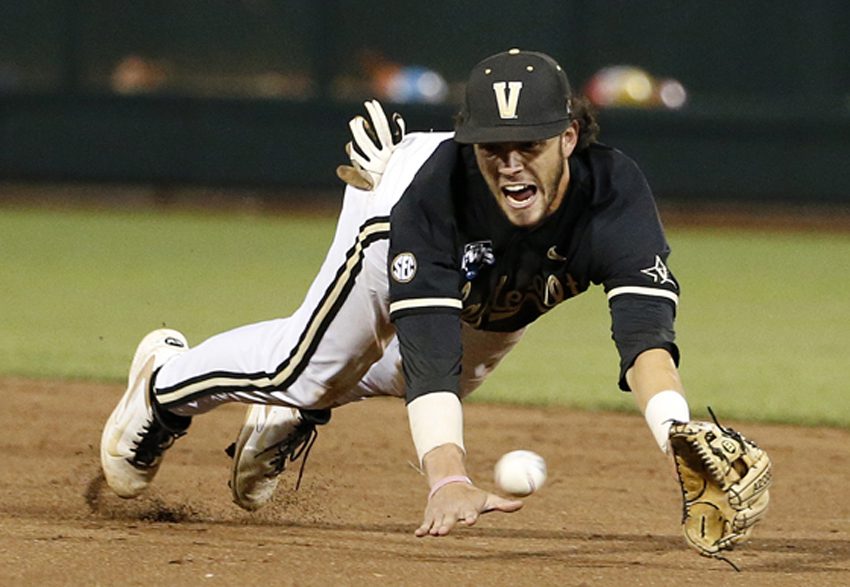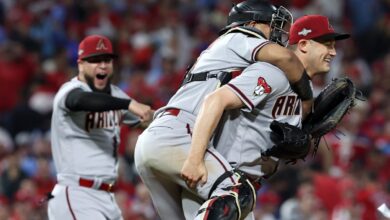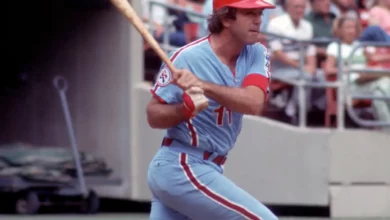

Freddy Galvis (Phillies SS)
Age: 21
Bats: Switch
Height: 5’-9”
Weight: 170 lbs
From: Venezuela
I don’t know whether or not you’ve heard this, but Jimmy Rollins is a free agent. While the Phillies general manager, Ruben Amaro Jr., has made it clear he’d like to bring Rollins back for a few more years, the possibility that he’ll move on to another team is certainly non-zero. Should Rollins and his excessive five-year contract demands seem reasonable to an executive more inept than Amaro, the Phils will need someone new to play every day at short. The list of potential free-agent replacements is not awe inspiring. It consists of glove-only journeymen (Jack Wilson, Nick Punto), washed-up ex-stars (Rafael Furcal, Orlando Cabrera, Edgar Renteria) and pure awfulness (Yuniesky Betancourt, Alex Gonzalez). Unless the Phillies wanted to break the bank to sign the injury-riddled Jose Reyes (a precarious investment to say the least, and thankfully one they can no longer make) they’d have to look beyond free agency to replace Rollins should he leave.
The solution may already be in the organization. At 21 years old, Freddy Galvis has improved in areas of previous concern this year and has surpassed even the loftiest expectations. Signed as a 16-year-old for $90,000, the Phillies were already interested in Galvis when he was just 14. Galvis’ skills are a scarce commodity in today’s baseball marketplace. It’s hard to find a good shortstop. Replacement level at shortstop is appallingly low. Betancourt sports a .270 OBP, is poor defensively and is still hovering at replacement level. To plug Galvis into the lineup at a minimum salary and then pump the money that would have been given to Rollins into another piece of the club (hopefully pieces better than Ty Wigginton’s corpse and Laynce Nix’s sub-.300 OBP) seems like a decent idea.
Offense: Heading into 2011, Galvis had been offensively atrocious in every season of his professional career. He never posted an OBP over .300. He never slugged over .311. Suddenly, he started hitting a little bit. This year, Galvis’s OBP climbed to .324 at double-A Reading (that’s right around major league average) and .315 at triple-A Lehigh Valley. He’s slugged .392 across those two levels and hit eight home runs (he had 10 total home runs over his four previous pro seasons) and a career high 28 doubles. Add five triples to that and Galvis has 41 extra base hits between double-A and triple-A as a 21-year-old, nothing to spit at.
I do not know if/what Galvis has done to alter his swing mechanics, since I had not seen his swing enough before this year to make any sort of comparisons. What I can comment on is what he’s working with now. Galvis keeps his feet very simple. There’s not a big stride or kick of any kind, very low maintenance. I don’t like when hitters take long strides because I think it can exacerbate problems with pitch recognition (see: Gose, Anthony). He shows good balance/weight distribution in the swing. As we move up to the hips, we start to see why Galvis only has 18 home runs in five seasons. The hip rotation is slow. He generates no torque with which to produce power. His hands and arms are weak; so weak that he essentially uses his entire upper body to whip the bat through the zone. He’s now good enough at it that he squares up balls and lines them into either gap, hence all the doubles and triples this season. He has good eye-hand coordination to thank for that. The swing path is flat. He’ll hit a bunch of line drives and ground balls, but the swing is entirely loftless. The bat speed is slightly above average.
Defense: Galvis is one of the best defensive shortstops in all of minor league baseball. He has good range to his left and average range to his right. A plus arm both on velocity and accuracy. He is especially good at charging forward to collect softly hit grounders, reacting so quickly that he often gets to balls before they leave the infield grass, then gobbling up the ball on a perfectly timed hop, before making a lightning fast transfer to his throwing hand and firing to first on the run. His glove is where fluky infield hits go to die, something I’m sure Roy Halladay would appreciate. He’s not especially acrobatic. Humpback line drives will get over his head when you consider that he’s 5’-9” without a spectacular vertical leap, but how often do those actually happen?
Running: I’ve timed Galvis from home to first at 4.15 and 4.09 seconds from the left side and 4.23 from the right side which makes him a 55 runner. He’ll be an asset on the bases and can probably swipe an inefficient 30 bases a year, though I’d rather have him steal 15 without getting caught.
The year Galvis had at the plate is probably his eventual ceiling in the big leagues. A .270/.320/.370 line combined with plus-defense at the most premium of positions with some value added on the bases? Sign me up. That’s a 2.5-4 WAR player right now. He could use another year at triple-A to further develop the bat, but the Phillies may not have that option.





